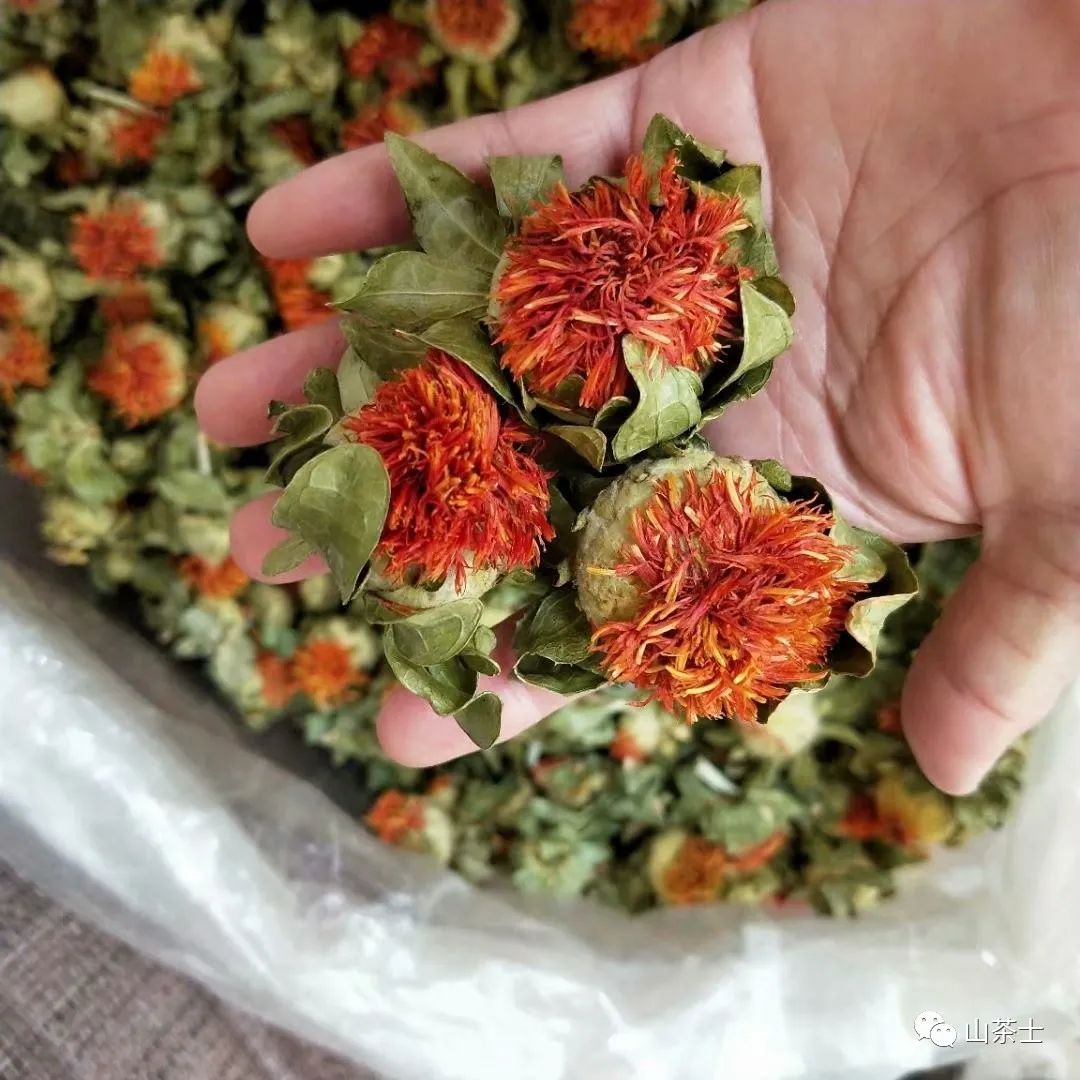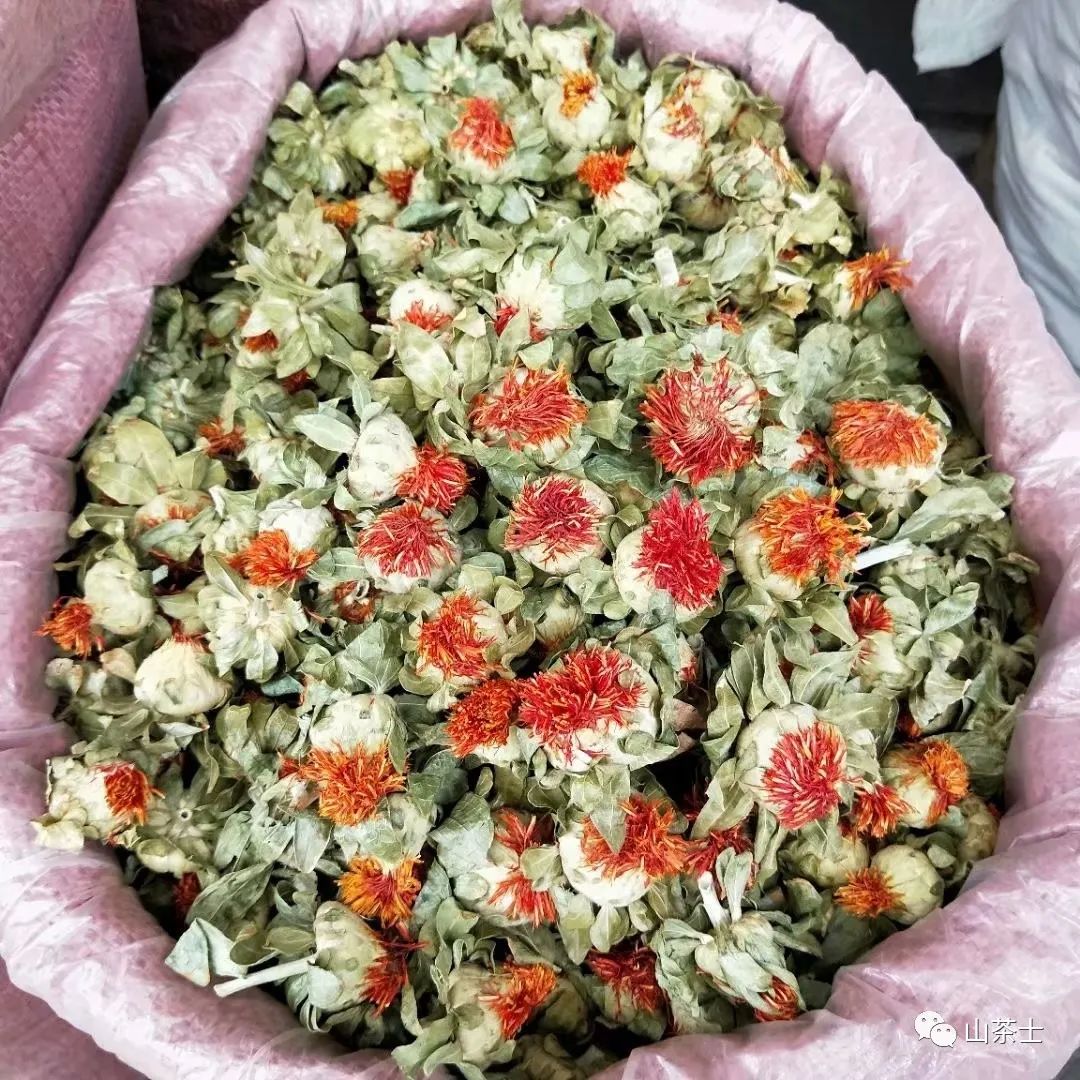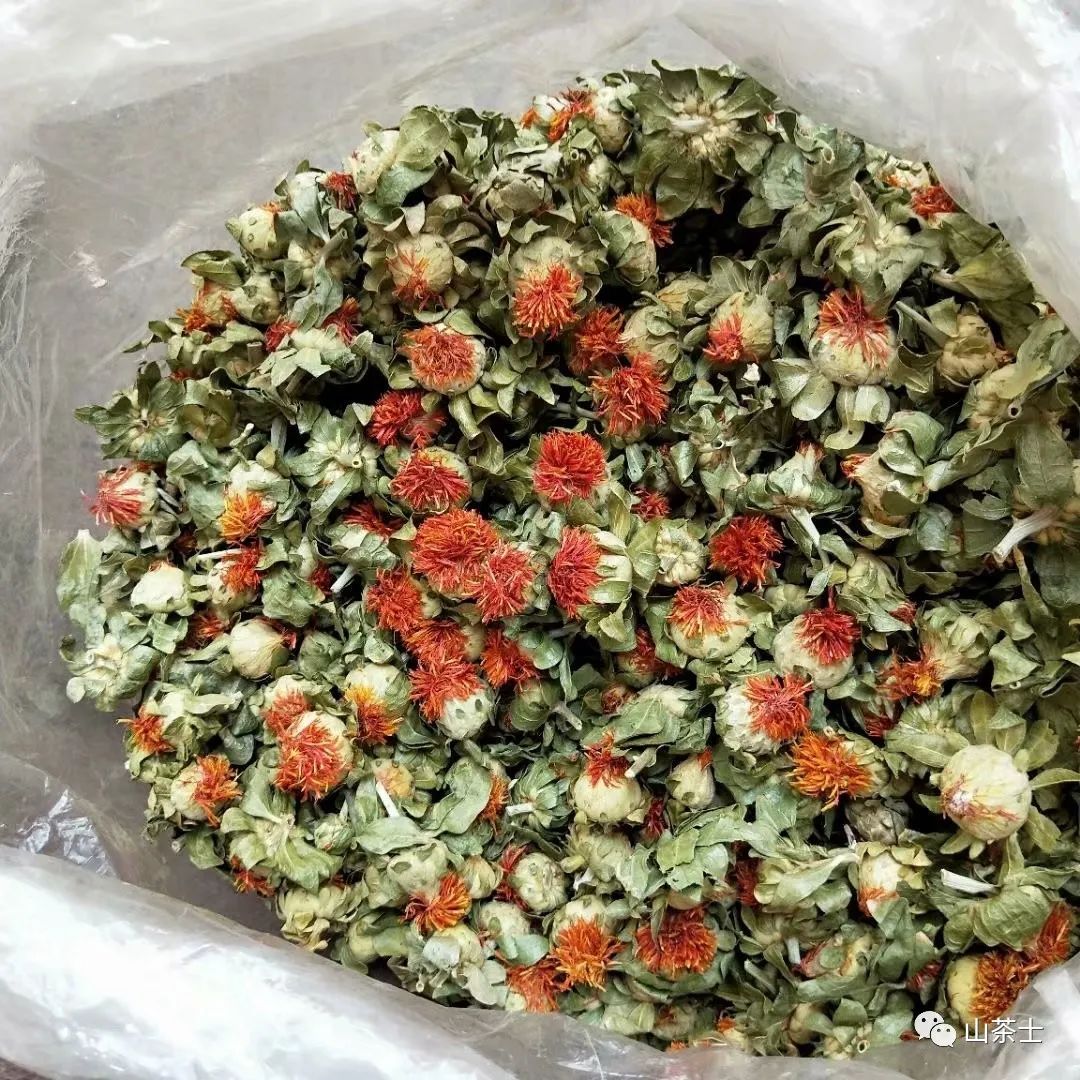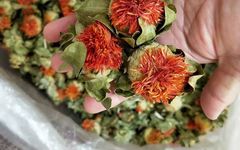Safflower (Hong Hua) is known for its ability to invigorate blood circulation, regulate menstruation, combat cancer, alleviate pain, and aid digestion; it is used for conditions such as amenorrhea, difficult labor, stillbirth, postpartum hemorrhage, postpartum blood stasis pain, carbuncles, and traumatic injuries.
Safflower can promote blood circulation, accelerate metabolism, invigorate blood and resolve stasis, and cool the blood. Using safflower in warm water for foot baths can further enhance blood circulation, showing more pronounced effects, especially for edema and pain in limbs caused by poor blood return. Additionally, long-term use of safflower foot baths can protect the heart and prevent cardiovascular diseases.

Aliases: Du Hong Hua, Huai Hong, Chuan Hong Hua, Cao Hong Hua, Ci Hong Hua, Hong Lan Hua
Taste and Properties: Pungent and bitter, slightly warm.
Meridians: Heart and Liver meridians.
Preparation Method:
Applicable Constitution: Blood stasis constitution.

Effects and Functions of Safflower
Safflower can invigorate blood, regulate menstruation, combat cancer, alleviate pain, and aid digestion; it is used for conditions such as amenorrhea, difficult labor, stillbirth, postpartum hemorrhage, postpartum blood stasis pain, carbuncles, and traumatic injuries.
1. Hemostasis
Safflower can prolong the coagulation time of whole blood, inhibit platelet aggregation, increase fibrinolytic activity, and suppress thrombus formation, thus playing a role in hemostasis.
2. Lipid Reduction
Safflower seed oil contains high levels of linoleic acid, which can lower blood lipids and serum cholesterol, soften and dilate arteries, prevent atherosclerosis, enhance blood circulation, and regulate the heart and aging endocrine system.

Safflower Indications
Modern pharmacological studies show that safflower has a mild stimulating effect on the heart, reduces coronary resistance, increases coronary flow, and enhances myocardial nutritional blood flow; safflower yellow pigment can counteract arrhythmias; decoctions, water extracts, and safflower yellow pigments can dilate peripheral blood vessels and lower blood pressure. Injectable solutions, alcohol extracts, and safflower glycosides significantly improve hypoxia tolerance and protect against ischemic hypoxic encephalopathy. Decoctions stimulate smooth muscles of the uterus and intestines. Safflower yellow pigment has analgesic, sedative, and anticonvulsant effects on the central nervous system. Additionally, safflower alcohol and water extracts have anti-inflammatory effects; safflower yellow pigment has immunosuppressive effects.
Commonly used for the treatment of acute and chronic muscle strain, swelling from bruises and sprains, pressure sores, coronary heart disease, and angina, all showing good results.
Daily Usage of Safflower
Dietary Health Dosage: 3-8 grams, decocted in water, but should not exceed 10 grams.
1. Tea Substitute
Place safflower and green tea in a covered cup and brew with boiling water. Brew 3 to 5 times for consumption, which can invigorate blood and resolve stasis.
2. Soup Preparation
12 grams of safflower, 200 grams of black beans, and 100 grams of brown sugar. Boil safflower and black beans in water, remove the safflower, add brown sugar, and consume the beans with the soup once daily. This can nourish and invigorate blood.
3. Alcohol Infusion
10 grams each of safflower and cinnamon, placed in 500 milliliters of white liquor, and infused for one day, can warm the meridians and invigorate blood.
4. Foot Bath
A small handful of safflower, wrapped in gauze, boiled in water for foot baths twice a day, can promote blood circulation.
Original content source: Zhishang Life
https://www.sohu.com/a/216541599_494860


